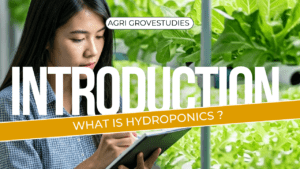Let’s talk about the incredible advantages of hydroponics!”
“First up: Extended Growing Season. Hydroponics allows year-round growth, meaning fresh produce is always available, even in winter!”
“Next, Improved Growth and Yield. Hydroponic plants grow faster and yield more because they get all the nutrients they need, directly to their roots!”
“Higher Plant Density is also a benefit. Without soil, plants can grow closer together, maximizing space.”
“And, hydroponics can be set up anywhere – apartments, homes, even urban rooftops!”
“Finally, Less Water Consumption – hydroponics uses up to 90% less water than traditional farming, making it eco-friendly!”
Let’s continue with more amazing advantages of hydroponics!”
“Fewer Pest Problems and Diseases. Hydroponic systems are closed, meaning there’s little to no need for pesticides. Plus, sterile nutrient solutions eliminate soil-borne pathogens!”
“Easy Harvesting. Since hydroponic plants are grown on elevated tables or counters, harvesting is easy and convenient.”
“Next is Sustainability.Hydroponics uses fewer resources and allows for local, year-round food production, reducing carbon emissions from transportation.”
“And finally, Space Efficiency. Hydroponics maximizes space by growing plants vertically, making it ideal for urban and indoor farming.”

“While hydroponics has many benefits, it also comes with some disadvantages.”
“First, High Setup Costs. Building a hydroponic system can be expensive, especially when compared to a traditional soil garden.”
“Hydroponics is also Vulnerable to Power Outages. Systems rely on electricity for lights, pumps, and other components, so outages can halt growth.”
“Next, there’s a Risk of System Failure. If pumps, sensors, or timers fail, plants can quickly suffer, leading to crop loss.”
“Constant Monitoring and Maintenance is another challenge. Hydroponics requires close attention to temperature, nutrients, and cleaning.”
“And watch out for Waterborne Diseases. Since water circulates throughout the system, infections can spread rapidly, harming all plants.”
“Lack of Natural Pest Control can be a drawback, as controlled environments lack natural predators to manage pests, sometimes leading to chemical pesticide use.”
“Additionally, Problems Affect Plants Quicker. Without soil as a buffer, nutrient deficiencies or diseases can impact plants almost immediately.”
“Finally, Environmental Concerns. Hydroponics often uses plastics and energy-intensive setups, which can impact the environment if not managed responsibly.”
